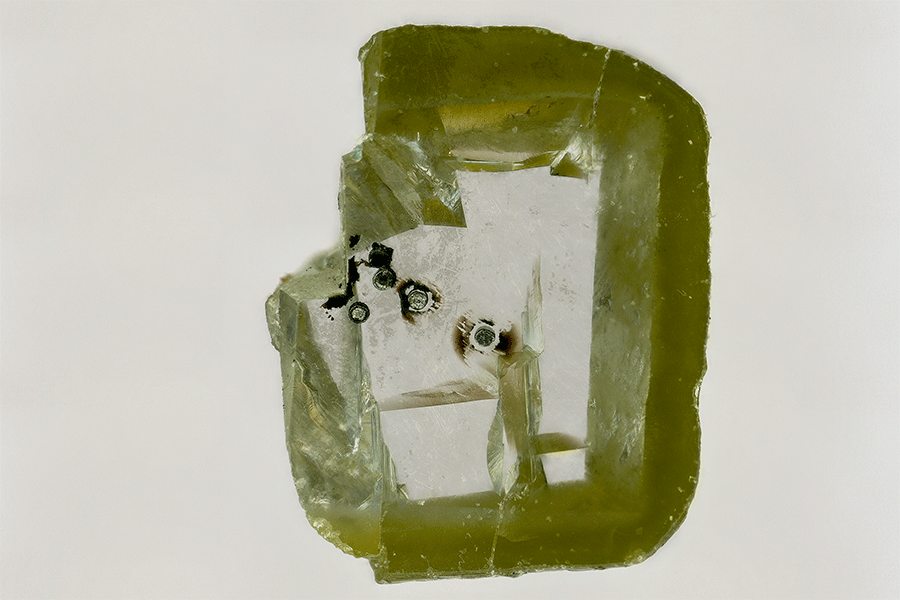
A diamond recovered from a mine in Botswana contains a mineral that has long been hypothesized to exist but has never before been seen in nature.
Munir Humayun, a professor of Earth, Ocean and Atmospheric Science and a scientist at the FSU-headquartered National High Magnetic Field Laboratory, and postdoctoral associate Shuying Yang were part of the team that identified the mineral — davemaoite.
The research was published in the journal Science.
The diamond formed deep within the Earth’s mantle, likely deeper than 700 kilometers. Mineral physicist Oliver Tschauner of University of Nevada, Las Vegas and colleagues discovered a novel inclusion within a diamond from Orapa, Botswana. Inclusions are minerals trapped at the time of diamond formation under extreme heat and pressure. Among these inclusions were two grains of davemaoite.
“Oliver Tschauner and his colleagues have unveiled a treasure trove of new information contained within diamonds, where the diamond is the treasure chest and its contents are the treasures,” Humayun said.
Davemaoite, the high-pressure form of calcium silicate perovskite (CaSiO3), forms cubic crystals. Under ambient conditions, davemaoite easily reverts into the triclinic phase, wollastonite. The survival of this mineral from the deep Earth is due to the incredible strength of natural diamond.
Tschauner and his colleagues conducted X-ray diffraction at Argonne National Lab to confirm the crystals’ identity and then brought them to Humayun at the MagLab for further exploration.
Humayun and postdoctoral researcher Shuying Yang conducted chemical analysis of the inclusions by laser ablation. Yang ablated the diamond until the inclusions were exposed and measured. They then used a highly sensitive magnetic sector mass spectrometer to measure data on about 12 elements in the davemaoite grains and found high levels of potassium.
Humayun noted that davemaoite had been synthesized in lab experiments and scientists had believed that it was a likely host of uranium and thorium. However, the discovery of large quantities of potassium was a surprise.
“This work showed that davemaoite hosts all three of the heat-producing radioactive elements in the lower mantle,” Humayun said.
Scientists note the discovery is significant because it completes scientists’ knowledge of the three major mineral phases in the Earth’s lower mantle — ferropericlase (Fe,Mg)O, bridgmanite (Fe,Mg)SiO3 and now davemaoite, CaSiO3.
“The discovery of the natural davemaoite grains enabled direct chemical measurements of a mineral that is the main host of many important trace elements in the deep Earth,” Humayun said.



